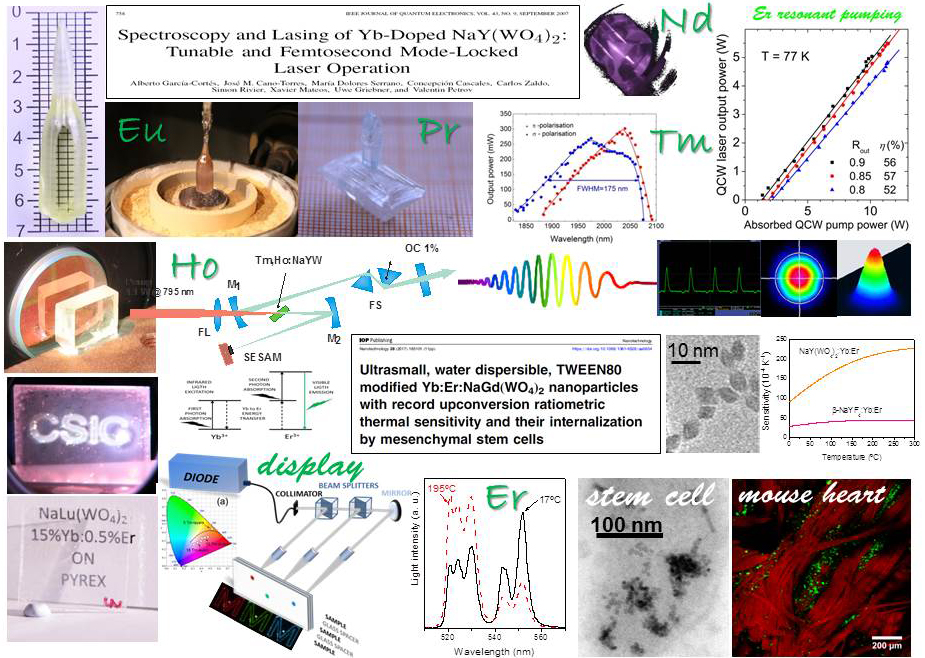REALM group contributes to the 4th Conference on Properties, Design, and Applications of Upconversion Nanomaterials -UPCON24 Conference-, Montréal, Canada, with the communication «Surface functionalization of upconverting nanoparticles for their transfer in aqueous media» . https://upcon.community/upcon2024/.
This work was possible through the Grant PID2021-128090OB-C21 funded by MICIN/AEI/10.13039/501100011033 and by ‘ERDF A way of making Europe’.

REALM group participates in the 4th Conference on Properties, Design, and Applications of Upconversion Nanomaterials -UPCON24 Conference-, Montréal, Canada, with the oral presentation “Upconverting nanoparticles in aqueous media: Not an end road. Avoiding degradation by using hydrophobic polymeric shells”. https://upcon.community/upcon2024/.
The work was possible through the Grant PID2021-128090OB-C21, funded by MICIN/AEI/10.13039/501100011033 and by ‘ERDF A way of making Europe’.

REALM group participates in the 6th International Conference on Rare Earth Materials, Vilnius, Lithuania, with the invited presentation “Preparation and characterization of GdVO4:Tb,Eu/carbon dot composites through hydrothermal deposition synthesis”. https://www.remat2024.chgf.vu.lt/.
This work was possible through the Grant PID2021-128090OB-C21, funded by MICIN/AEI/10.13039/501100011033 and by ‘ERDF A way of making Europe’.


“Non-conventional solutions on luminescence-based high temperature thermometry for applications of industrial interest (IMPETUSS)” Project has been awarded for the period 01/09/2022 to 31/08/2025.
This project proposes new strategies for the design of contactless photoluminescence (PL) thermal probes spanning their operation range to temperatures well above 300 K. These probes will be based either on the PL of lanthanides (Ln) incorporated in inert refractory hosts or on that of carbon quantum dots (CQDs). In combination with remote reading techniques, the new developed thermal probes will enable the creation of bidimensional temperature maps, which may prevent device failures by allowing early detection of thermally aged areas.

“Valorisation of CaNbGa garnets as thin disk elements in high power, high-rate, ultrashort pulsed laser oscillators (THINLAS)” project has been granted for the period 01/12/2022 to 30/11/2024.
This Project aims the extension of thin disk laser (TDL) technology, based on Yb doped YAG single crystals, to modelocked operation by using disordered single crystal Ca3(NbGa)5O12 garnets (CNGG) doped with Yb (or Tm, Ho, and Tm+Ho for emission in the λ≈ 2 µm region), to provide laser pulse durations in the femtosecond (1 fs= 10-15 s) time scale with large pulse peak powers. This is based on the large Yb3+ bandwidth in previously developed CNGG crystals, typically FWHM= 23.5 nm (or 221 cm-1), along with an optical absorption three times more efficient than in YAG, which promises thinner disks with better cooling. The productivity of laser material processing and monitoring in various fields will be greatly improved by a laser module with the characteristics described above. Just to mention some few examples: In photovoltaic silicon cell processing for CO2-free energy harvesting, surface texture free of chemical wastes will be possible. Polymeric soft transparent materials, extensively used in biomedical health care, can be welded and mechanically processed with λ≈ 2 µm laser equipment. LIDAR systems incorporating increased high power lasers and repetition rates will have longer penetration depths and better spatial resolution. Overall, the development of high power–high repletion rate lasers with ultrashort pulse duration will provide new tools for improving the wellness of the population through routes that are compatible with a sustainable and green manufacturing.
The article «Upconverting Nanoparticles in Aqueous Media: Not a Dead-End Road. Avoiding Degradation by Using Hydrophobic Polymer Shells», published in Small, 2021, 2105652, https://onlinelibrary.wiley.com/doi/10.1002/smll.202105652, presents a new strategy to coat and protect β-NaYF4 upconversion nanoparticles (UCNPs) against degradation in aqueous media by growing a hydrophobic polymer shell (HPS) through miniemulsion polymerization of styrene (St), or St and methyl methacrylate mixtures.
Stability studies reveal that these HPSs serve as a very effective barrier, impeding polar molecules to affect UCNPs optical properties. Even more, it allows UCNPs to withstand aggressive conditions such as high dilutions (5 μg mL−1), high phosphate concentrations (100 mm), and high temperatures (70 °C).
Electromagnetic (EM) hyperthermic technologies hold great potential in the treatment of diseases, especially for cancers that are resistant to standard regimens. Hyperthermia is particularly effective in treatment of cervical and breast cancer, head and neck cancers, sarcoma in adults, and germ cell tumours in children; while radiofrequency and microwave ablation offer promise for treating liver, kidney, and lung cancers.
Accurate knowledge of the dielectric and thermal properties of tissues is needed for the development of hyperthermia-based technologies and de-risk the technical challenge before commercialization, However, often researchers working on the development of medical technologies are not fully aware of, and not trained to address the clinical and commercialisation challenges facing novel medical devices.
The MyWAVE Action takes a holistic approach by bringing together key players in the field of dielectric spectroscopy, translational research, and medical professionals. Conjoining these varied communities into one collaborative network is critical to advance the design, development, and commercialisation of EM hyperthermic technologies, so that they can reach patients faster and improve treatment outcomes.
Furthermore MyWAVE also support the training of young scientists as well as scientific conferences in EU countries.



